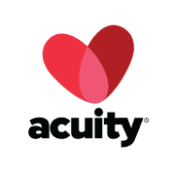The landscape of car insurance in the United States is rapidly evolving, with new technologies and changing consumer behaviors shaping the future of this vital industry. In this comprehensive article, we will delve into the emerging trends that are set to redefine car insurance in the U.S., exploring how they will impact consumers, insurers, and the broader economy.
Understanding the Current State of U.S. Car Insurance
Traditional Models and Their Limitations
The U.S. car insurance market has operated on a relatively unchanged model for decades. Premiums are primarily based on factors like driving history, age, and the type of vehicle insured. However, this model has limitations, particularly its ability to accurately assess individual risk and adapt to new technologies.

The Digital Revolution in Car Insurance
Harnessing the Power of Technology
The advent of digital technology is ushering in a new era for car insurance. Insurers now leverage data analytics, telematics, and artificial intelligence (AI) to offer more personalized and dynamic insurance products.
Telematics and Usage-Based Insurance (UBI)
Telematics technology, which integrates telecommunications and informatics, is at the forefront of this revolution. Usage-Based Insurance (UBI) models, which use telematics devices to monitor driving behavior, are becoming increasingly popular. These models offer premiums based on actual driving patterns, potentially lowering costs for safe drivers.
AI and Machine Learning
AI and machine learning are also playing a critical role. These technologies enable insurers to process vast amounts of data, from driving habits to environmental conditions to assess risk and tailor insurance products accordingly more accurately.
The Impact of Autonomous Vehicles
A New Frontier for Car Insurance
Autonomous vehicles (AVs) represent one of the most significant changes on the horizon for car insurance. As vehicles become increasingly autonomous, questions arise about liability and risk assessment in the event of accidents.
Shifting Liability
With AVs, liability may shift from drivers to manufacturers or software developers, requiring a reevaluation of traditional insurance models. Insurers are already exploring policies tailored to AVs, considering factors like software reliability and cybersecurity risks.
Changing Consumer Expectations and Behaviors
Demand for Flexibility and Transparency
Today’s consumers expect more from their insurance providers, including flexibility, transparency, and personalized services. Insurers respond by offering more customizable policies and leveraging digital platforms to enhance customer experience.
The Rise of Peer-to-Peer (P2P) Insurance
Peer-to-peer insurance is another trend gaining traction. This model allows individuals to pool their resources to insure against common risks, often leading to lower premiums and a more community-oriented approach.
Regulatory Changes and Challenges
Navigating a Changing Legal Landscape
As these new technologies and models emerge, regulatory frameworks are also evolving. Insurers and policymakers are working together to ensure that regulations keep pace with innovation, protecting consumers while fostering growth in the industry.
Data Privacy and Security
With the increased use of data analytics and telematics, data privacy and security concerns are paramount. Insurers must navigate these challenges carefully to maintain consumer trust and comply with evolving data protection laws.
Embracing a New Era of Car Insurance
The future of car insurance in the U.S. is poised for significant change, driven by technological advancements and shifting consumer demands. As we embrace these emerging trends, the industry must balance innovation with consumer protection, ensuring a sustainable and equitable future for car insurance.

















